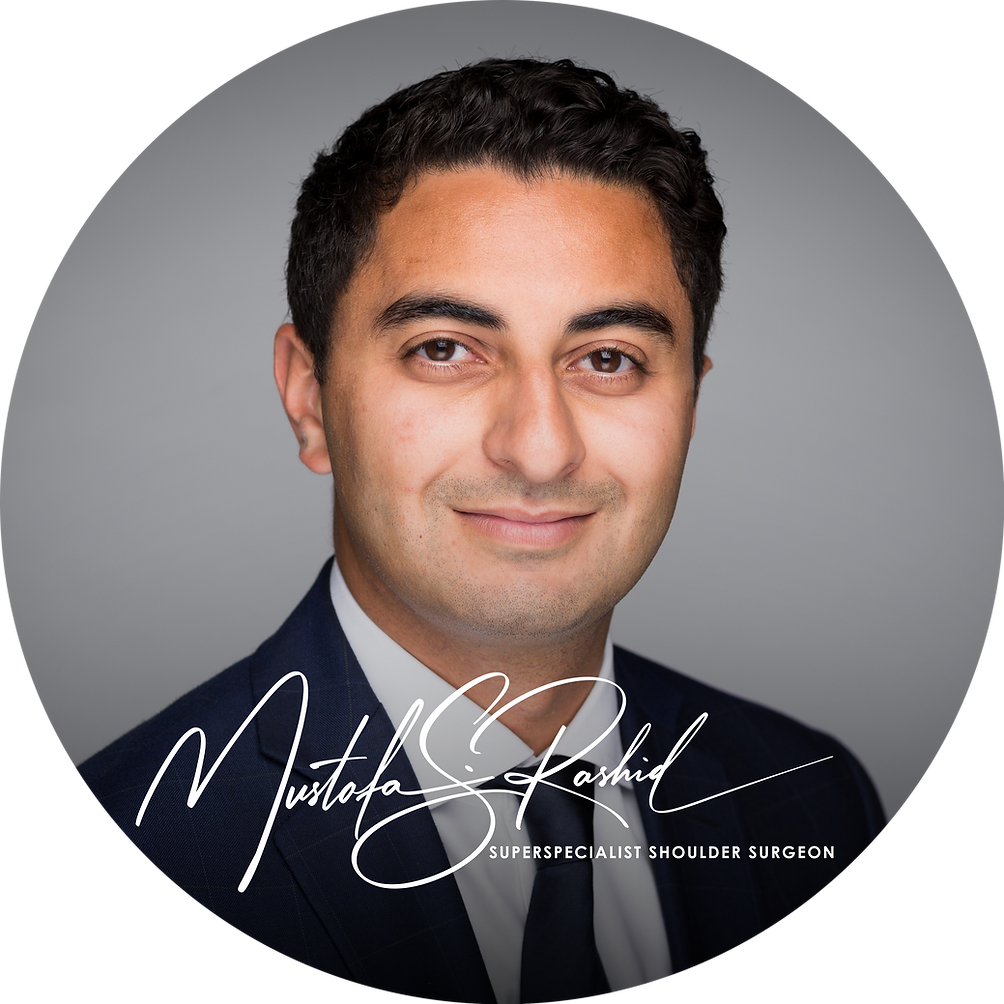Collarbone Fracture Fixation Surgery

Overview
Most collarbone fractures will heal naturally, and will not cause any significant reduction in movement, strength, or function after they have fully healed and rehabilitated. However, patients may choose to have surgery, based on the advice given by Dr. Rashid, to improve the chances of healing, or for other factors. Surgery involves putting the pieces of the collarbone back together and holding them there with a plate and screws to allow for healing.
Indications for Surgery
The indications for collarbone fracture surgery varies for each patient. Most patients can avoid surgery and their fracture will likely (approximately 90% chance) heal without surgery. However, patients may choose surgery to improve their chances of healing. Other indications include better early pain relief (although no difference in the long term), and quicker recovery (potentially). A fracture that heals with surgery is not necessarily “better” than a fracture that heals naturally. However, if your fracture will not heal without surgery, then surgery is often the best way to improve function and gain relief of pain.
Pre-Surgery Tests and Assessment
Before any surgery to the collarbone a variety of assessments and tests, such as X-rays, are performed. Dr. Rashid will assess how far the fragments have moved, what type of fixation is best for your fracture, and what your chances of healing are.
Procedure Details
Surgery to fix a collarbone fracture is done under general anaesthesia. Whilst under anaesthetic, you will be position lying on your back, slightly sat up (20*). An incision is made under the collarbone. This is to avoid placing the scar directly over the bone, which may be irritated by clothing and wearing backpacks, as the collarbone sits just underneath the skin. The fracture fragments will then be put back in their correct position and held with a plate and screws inserted into the bone. This type of fixation is strong and will hold the fracture in position until it heals. The scar is then closed in layers, using absorbable sutures, buried under the skin, and therefore do not need to be removed later.
At the end of the procedure, you will be placed in a sling for comfort.
Risks and Complications
The risks of collarbone fracture surgery are not common. These include infection, stiffness, pain, a scar, punctured lung (pneumothorax) and nerve injury (rare). Most patients will notice some numbness under the scar, over the chest area. Some patients may feel the metal plate under the skin, as there is not much padding between the bone and the skin. Dr. Rashid has carefully trained over many years to perform this operation and can do so safely and effectively. It is generally not recommended to remove the implant, unless they are causing problems, which is rare.
Recovery and Rehabilitation
Recovery following this type of surgery is generally quick. Dr. Rashid will provide you and your physiotherapist with a protocol that involves when you can discard your sling (usually after a a week), and when to commence certain movements. Physiotherapy is helpful to ensure you regain your motion, function, and strength of the shoulder. Pain relief is often appreciated in the first month. The fracture will still take approximately 6 weeks to heal, but it will feel “healed” much sooner as the plate and screws provide support to the bone.
Expected Outcomes
Most people will be in a sling for a week and therefore driving is not advised during this time. After that phase, rehabilitation will include phased return to full motion, activity, and strength. Most people can return to work after 1 week if they do not have a physically demanding job. Most people can return to manual work and sports between 6 and 12 weeks after surgery. The success rates of this surgery are typically greater than 95%. Healing rates are usually greater than 90%.
About the Author

Mustafa Rashid
Dr. Mustafa Rashid is an award-winning, well published superspecialised surgeon from the UK, specialising in shoulders
